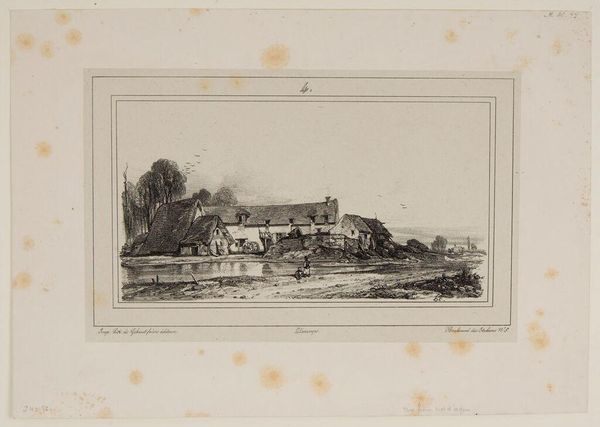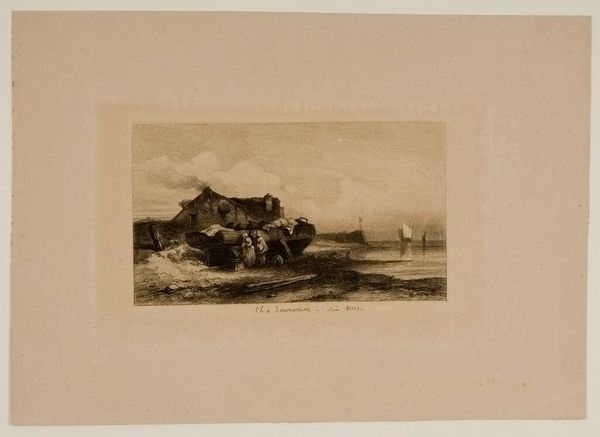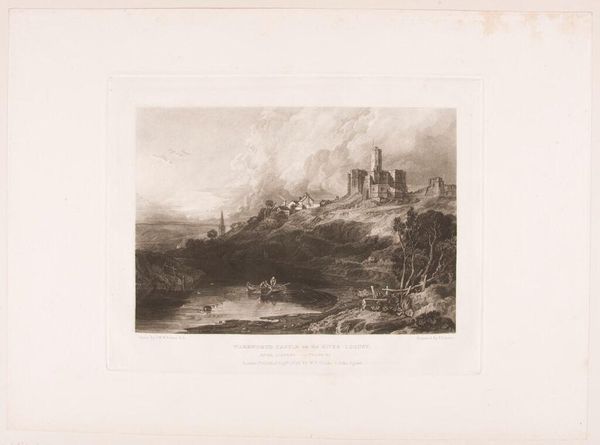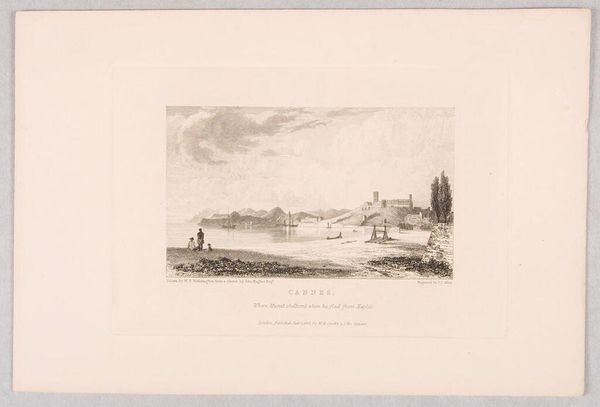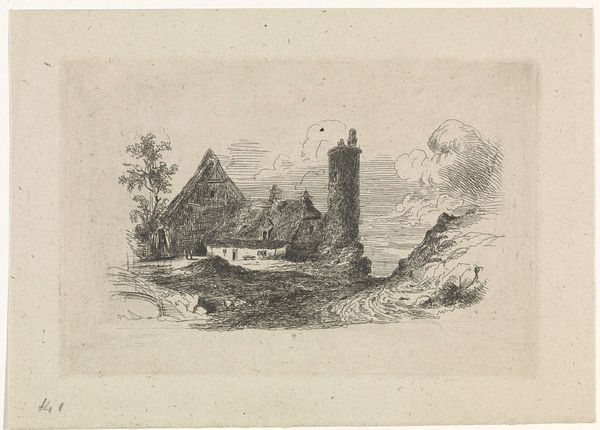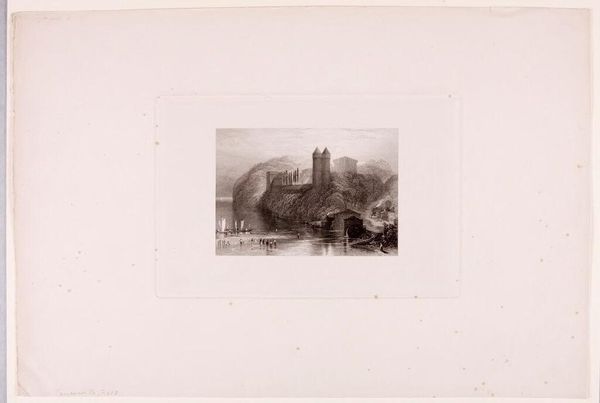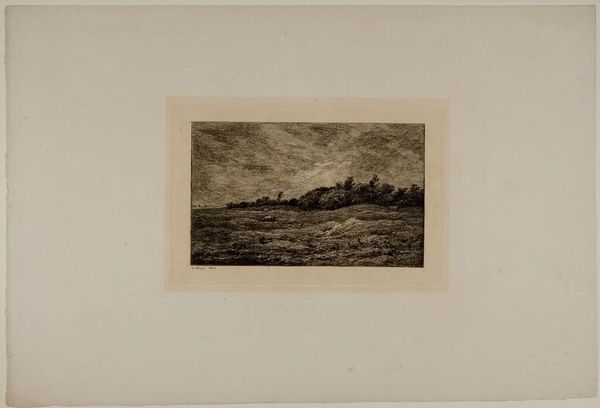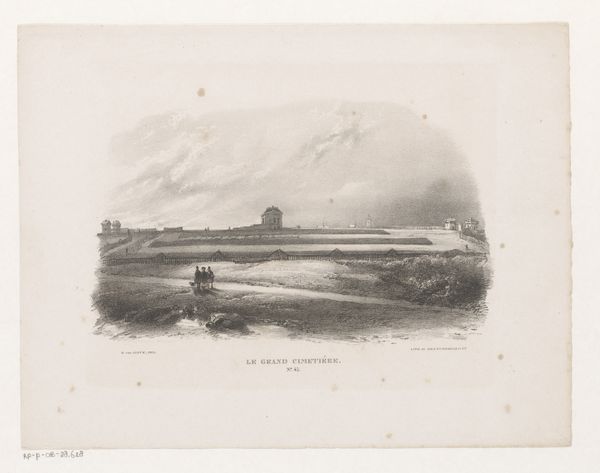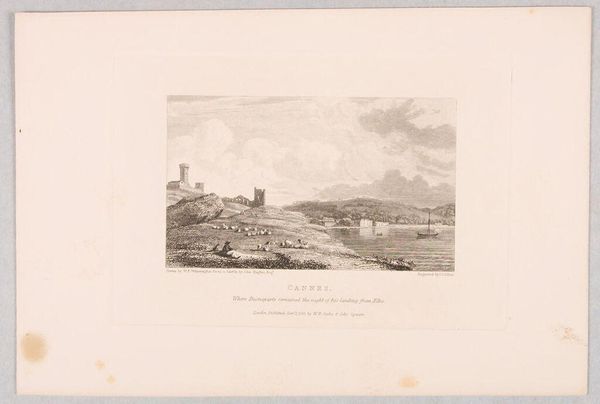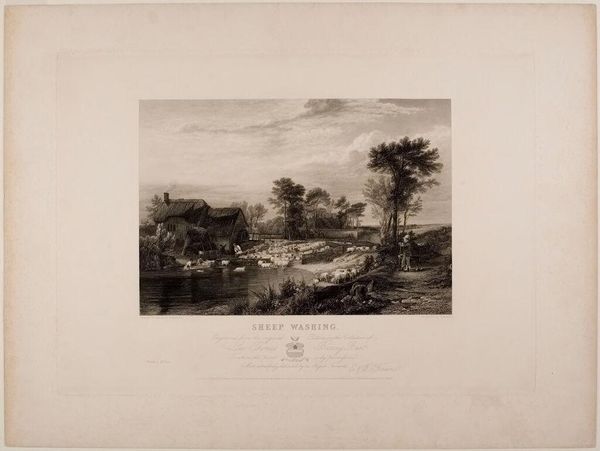
Copyright: CC0 1.0
Curator: Here we have William Sayre’s "Kirkenstall Abbey on the River Stour," held in the Harvard Art Museums collection. Editor: Immediately, the image evokes a profound sense of melancholy, doesn't it? The somber tones, the ruined abbey... a powerful image of decay. Curator: Indeed. Sayre, of course, was working within a printmaking tradition. The very medium speaks to wider distribution and consumption of such romantic images. Editor: The Abbey itself looms large, representing more than just a building. It’s a potent symbol of lost faith, the dissolution of the monasteries, perhaps even the transience of human endeavor. Curator: And consider the labor involved in producing multiple copies of this image. Each print represents hours of work, and contributes to the cultural memory encoded here. Editor: It's interesting to consider the artist’s perspective too. What did Kirkenstall Abbey signify to him, personally? Was it a celebration of history, or a lament for what was lost? Curator: Perhaps both? Looking at this, I am reminded how art mediates between material processes and symbolic meanings, each inseparable from the other. Editor: Ultimately, I'm left contemplating how symbols of power become ruins, and how art keeps those stories alive.
Comments
No comments
Be the first to comment and join the conversation on the ultimate creative platform.


